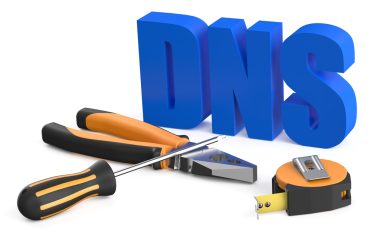
Before organizations start a cloud journey, they must first evaluate what their present internal infrastructure costs are in order to grasp the return on investment.
When it comes to cloud infrastructure, many organizations are reluctant to actually move to the cloud for fear of having to decommission their non-cloud resources. In most cases, an “all-in” approach to the cloud doesn’t make sense for those organizations that should also retain non-cloud resources. A hybrid cloud Infrastructure-as-a-Service (IaaS) approach to IT provides a method for businesses to reduce IT costs, improve performance, and offer an attractive way to launch new technologies while leveraging their existing infrastructure. By leveraging this approach, organizations can break down the perceived financial and organizational barriers to moving their entire infrastructure to the cloud.
Finding the right hybrid cloud start point
Hybrid IT infrastructure is still a new concept that has yet to be fully fleshed out, so where you start really depends on your specific needs. If your company is still using hardware that is fairly new, it might not be profitable to spend time and money on a hybrid infrastructure as the current machines will work perfectly fine for now. However, if you are looking to grow your business quickly or start replacing older equipment, then a hybrid IT could be the right solution for those objectives. These three variables are the most common reasons why IT organizations make a switch to a hybrid infrastructure.
- Physical location: This involves looking at infrastructure in a specific region of the world or country. For example, non-production environments that aren’t critical to the company’s operations running on servers in Florida could be shifted to the cloud with minimal disruption.
- Business department: Moving operations to the cloud based on specific departments, such as finance or accounting. It typically makes sense to start with those departments that can make the move without slowing down business too much.
- Age of physical hardware: When the time comes to replace machines, this is a good opportunity to transition portions of your infrastructure to the cloud. This can provide operational efficiencies and cost savings as opposed to investing in new hardware. Further, investing in new hardware restricts flexibility, as it often means committing to said hardware for a number of years.
A full IT infrastructure audit could be required as part of the path your company takes. Therefore, it is important to understand all of your options before jumping into a hybrid infrastructure.
See also: iPaaS Market Size to Reach $23.7 Billion By 2028
Cloud migration pitfalls to be aware of
The major cloud providers offer online calculators to assist you with determining the total cost of ownership (TCO), but businesses should treat them with caution. It’s impossible for these resources to make an exact calculation of your expenses since they can’t possibly account for all of the unique demands of your organization. Factors they rarely consider include disaster recovery, cloud-specific training, labor, and the support staff needed to maintain and manage the infrastructure that remains deployed internally.
The costs associated with a migration to the cloud can grow quickly and lead to surprise for those who aren’t prepared. As such, it’s the responsibility of IT leaders to understand just how much they’re spending on their current operations and what each cloud vendor is offering. People are often unaware that cloud platforms typically provide access to only processing and storage; they fail to realize that items such as usage monitoring, administration, backups, and data integration will come at an extra cost.
Another major consideration concerns security. A common misconception is that cloud providers include security for applications and networks—they don’t, at least not in most cases. You’ll need to have your own security measures in place since the costs of reclaiming may be prohibitively high if there are breaches.
When migrating to the cloud, another factor you should consider is how well you understand your current environment. For instance, if you’re moving to SaaS-based applications, you need to know the logic behind how they work and what they rely on in order to properly set up integrations or customizations that will ensure users get the most value out of them. Without an understanding of their inner workings, it’s difficult to know what can and can’t be done.
Getting executives on board
It can be quite challenging to get executive buy-in on moving IT infrastructures to the cloud. I have found that a successful strategy is for CIOs or other IT leaders to work with CFOs or financial leaders so they can strategize and implement a hybrid IT strategy. On the CIO’s end, they should develop a plan for users on the ground while also explaining the business value to the CFO and other executive stakeholders. Armed with this information, the CFO is in a much better position to convey the business value to a wider audience, specifically those who make up executive boards.
Before organizations start a cloud journey, they must first evaluate what their present internal infrastructure costs are in order to grasp the return on investment. I’ve witnessed too many businesses take a chance in the cloud without properly assessing their needs and requirements, only to be disappointed by their experiences and expenditures.
Although adopting a hybrid IT architecture is primarily a technical endeavor, it will be considered a financial decision in the end. If the change does not appear to make financial sense to the company, it will not get approval from important stakeholders. The move must be accompanied by business advantages, such as fostering innovation, generating new income, lowering expenses, capturing market share from rivals, or a combination of the three.
Ultimately, most businesses will not be able to go “all-in” on the cloud. For most firms, a more measured hybrid IT infrastructure approach is the better option. Those who win are those who plan out a strategic launch calendar, consider the costs and pitfalls, and collaborate with business executives to acquire full corporate support.





























